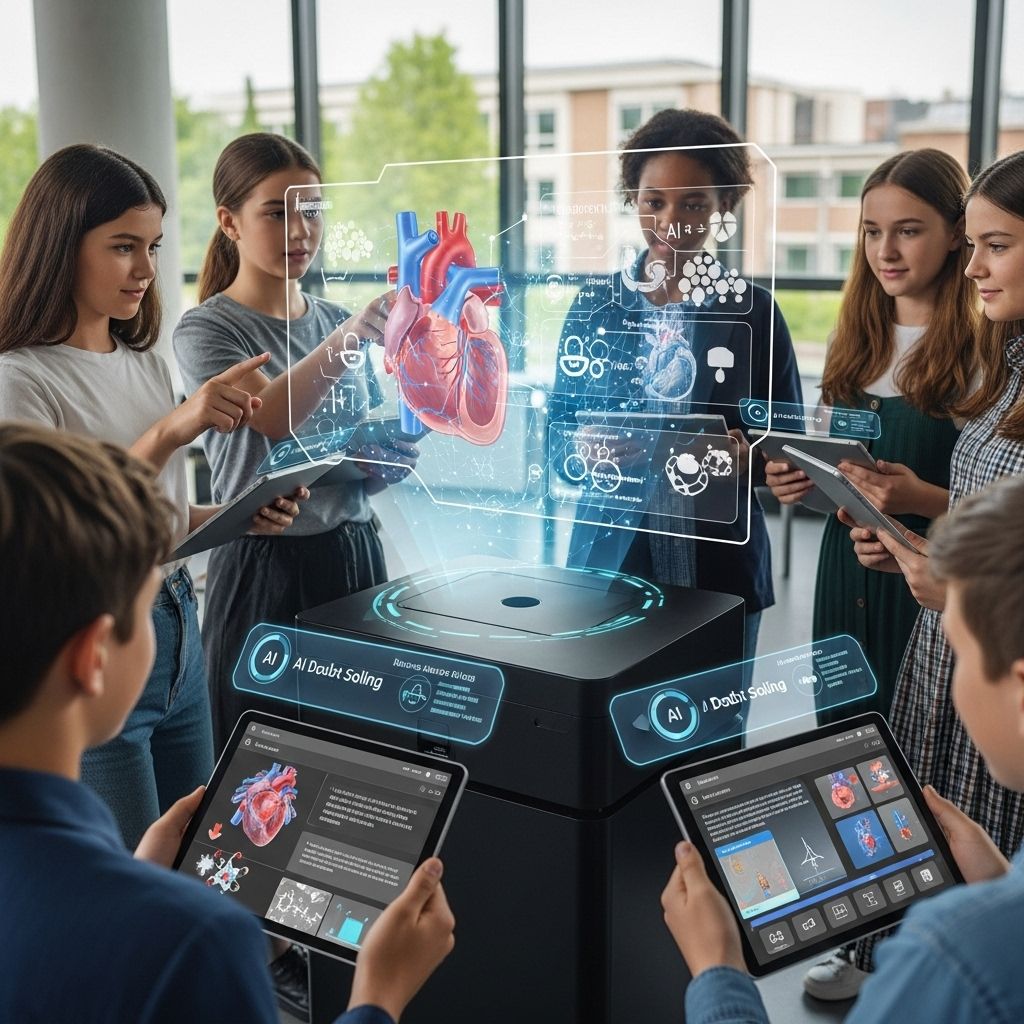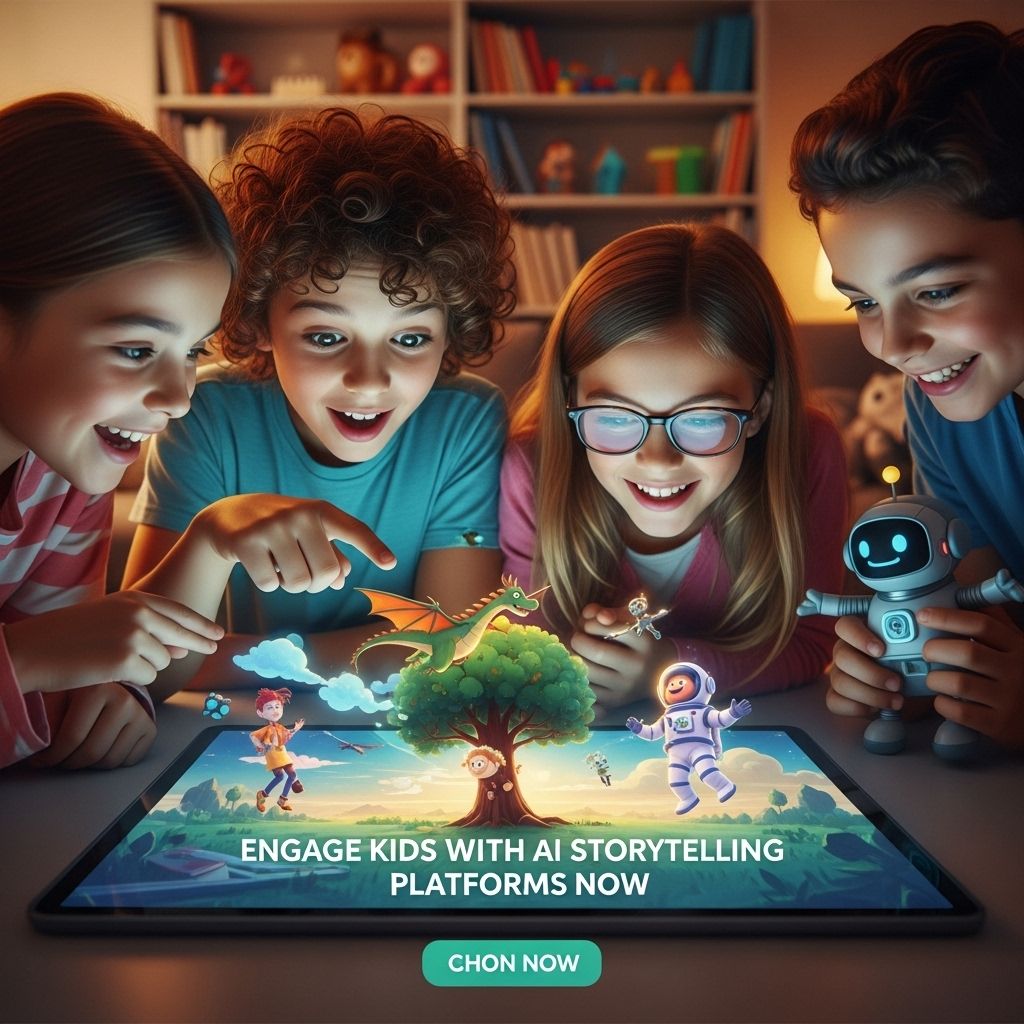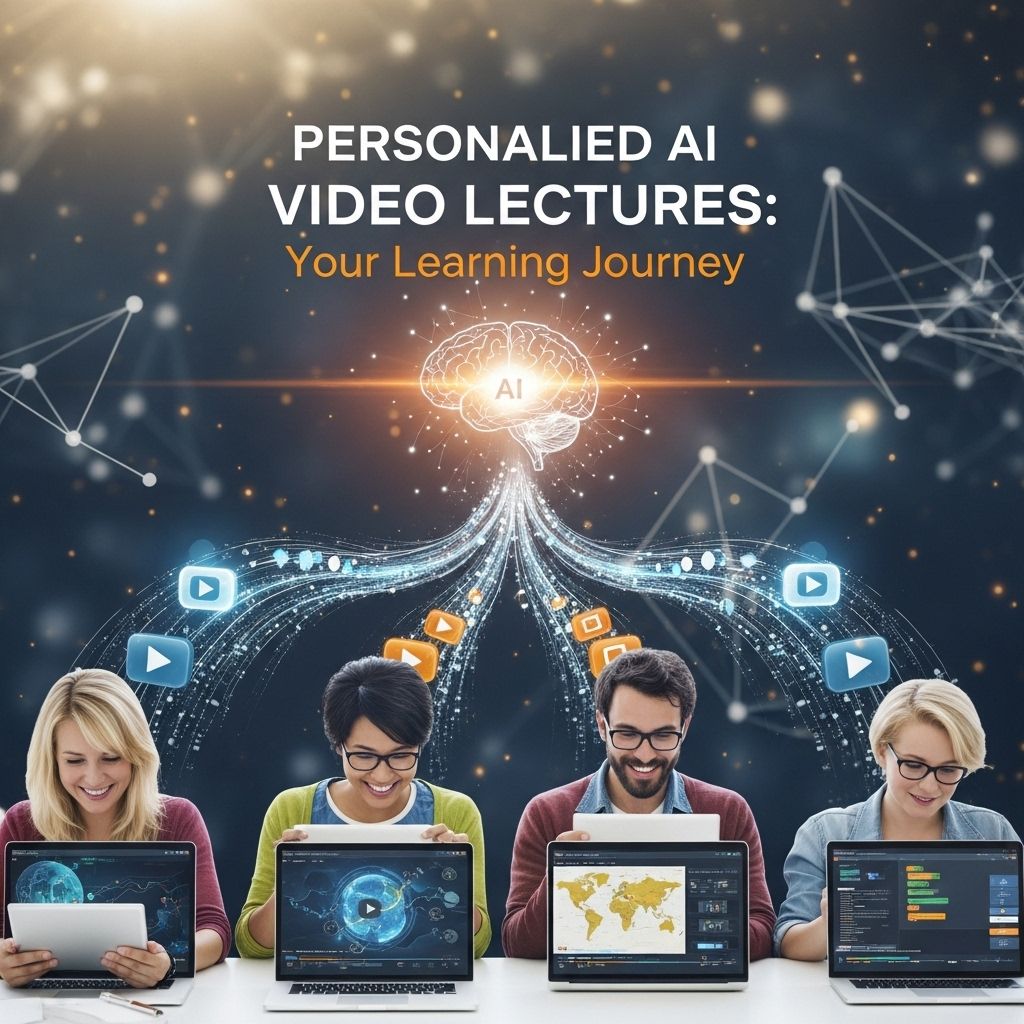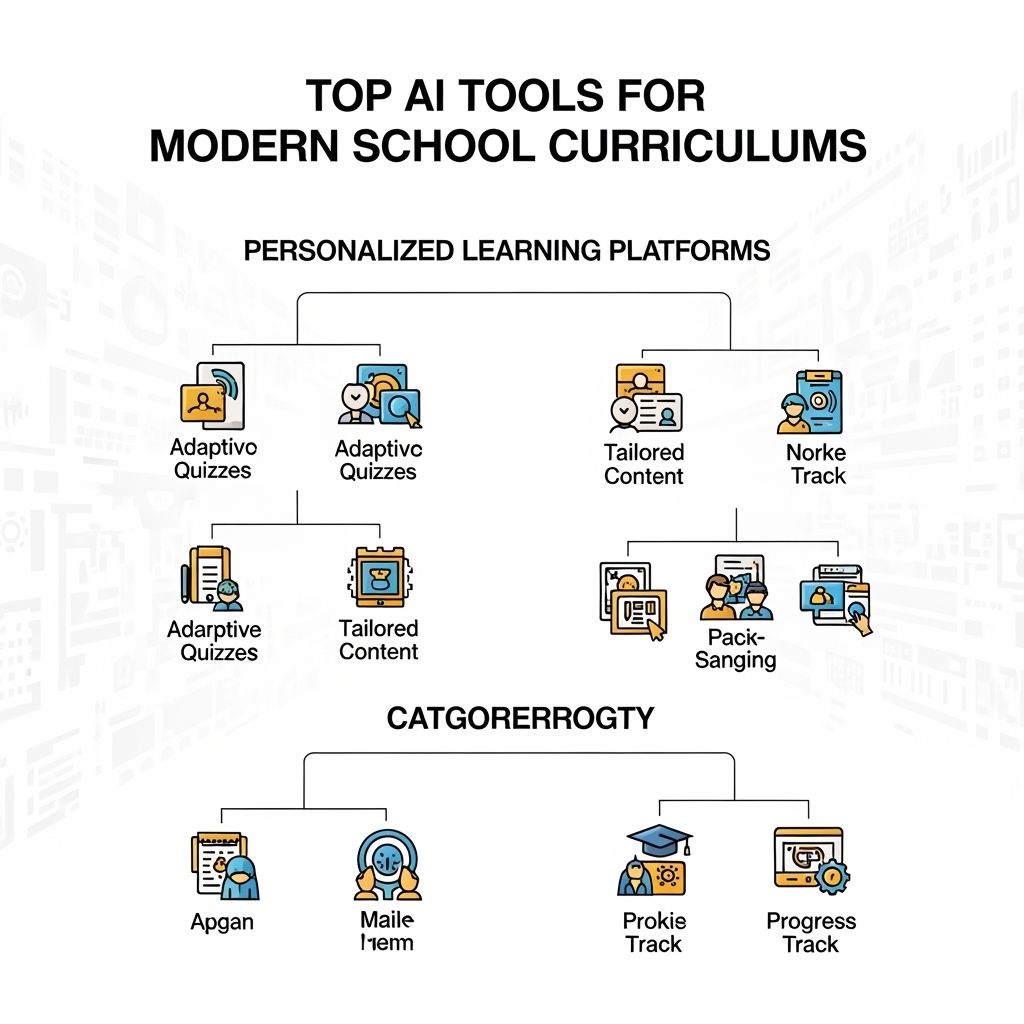Revolutionizing Kids’ Learning with AI Storytelling
Discover how AI storytelling transforms children's education, fostering creativity and engagement in learning through interactive narratives.
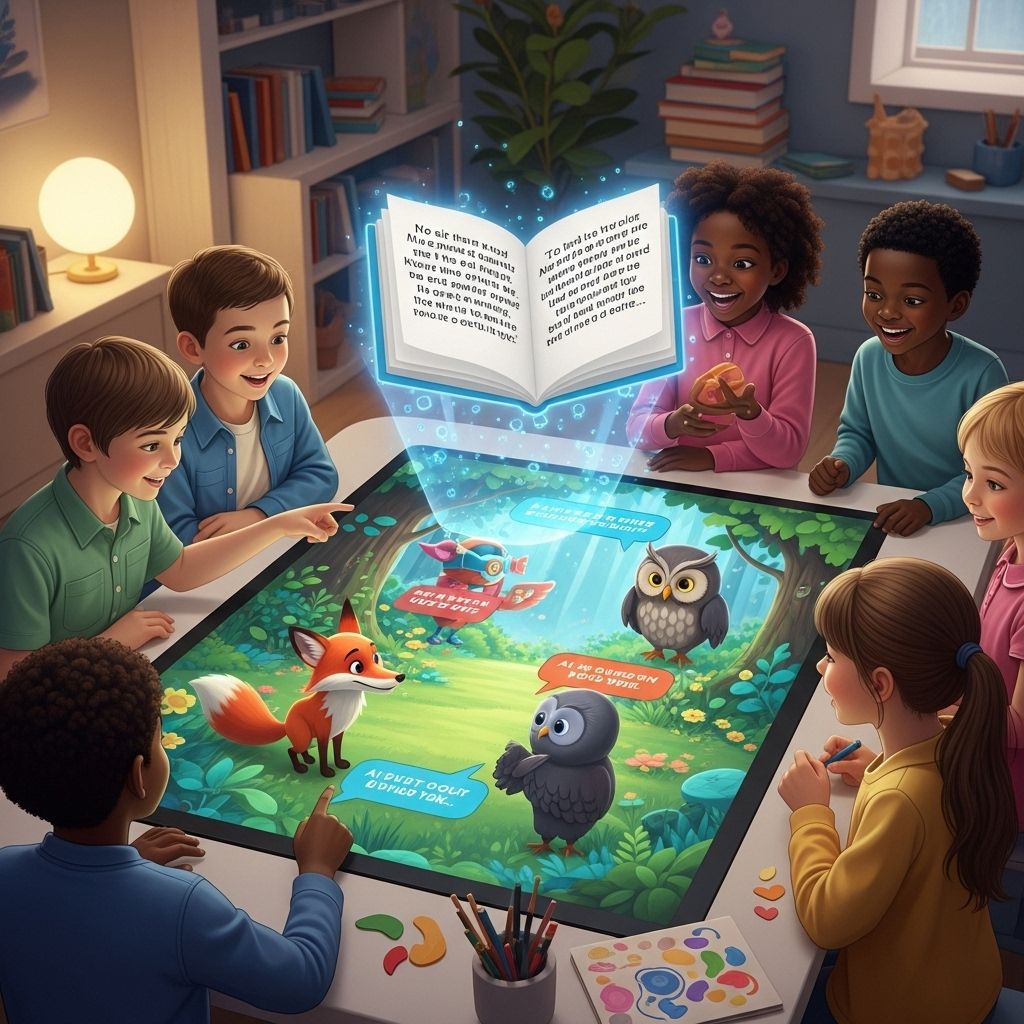
In today’s digital age, the way children learn and engage with stories is undergoing a dramatic transformation, thanks to the integration of artificial intelligence (AI). The traditional methods of storytelling, while still valuable, are being augmented by innovative technologies that personalize and enhance the learning experience. Through AI-driven storytelling, children can explore narratives in ways that are interactive, adaptive, and deeply engaging. This article delves into the intricacies of how AI is revolutionizing kids’ learning experiences through storytelling.
Table of Contents
The Power of Storytelling in Education
Storytelling has been a fundamental part of human culture and education for centuries. It ignites imagination, fosters creativity, and enhances comprehension. Here’s why storytelling is essential in learning:
- Enhances Vocabulary: Exposure to stories introduces children to new words and phrases, aiding language development.
- Stimulates Imagination: Narratives encourage children to visualize and think critically about different scenarios.
- Promotes Emotional Understanding: Through characters and plots, children learn about empathy and social interactions.
- Improves Retention: Stories are easier to remember than abstract concepts, making them effective educational tools.
How AI is Transforming Storytelling
AI is enhancing traditional storytelling methods by introducing interactive elements that make learning more engaging. Here’s how:
Personalized Learning Experiences
AI can tailor stories based on a child’s reading level, interests, and learning pace. This personalization ensures that each child receives a unique learning experience that caters to their needs. For instance:
- Adaptive Narratives: AI can change the storyline based on the child’s choices, keeping them engaged and allowing for multiple endings.
- Language Support: AI can offer translations or explanations for complex words, helping children expand their vocabulary without losing the story’s flow.
Interactive Storytelling
With AI, stories can become interactive adventures. Children can participate in the narrative, making decisions that influence the plot’s direction. This not only makes reading fun but also enhances critical thinking skills. Here are some interactive storytelling formats:
| Format | Description |
|---|---|
| Choose-Your-Own-Adventure | Children make choices that lead to different outcomes, promoting engagement and decision-making skills. |
| Voice-Activated Stories | Using voice recognition, children can narrate parts of the story or respond to character questions. |
| Augmented Reality Integration | AI can combine stories with AR, allowing characters to come to life in the real world, enhancing visual learning. |
The Role of AI in Enhancing Creativity
One of the most significant advantages of AI storytelling is its ability to inspire creativity. Children can not only listen to stories but also create their own with AI assistance. Here’s how AI fosters creativity:
Story Generation Tools
AI algorithms can help children craft stories by suggesting plot twists, character development ideas, and settings. These tools serve as digital writing partners, encouraging young authors to express their ideas freely. Examples include:
- Story Cubes: AI-powered dice that suggest elements to include in a story, sparking creativity and brainstorming.
- Collaborative Storytelling Apps: Platforms where children can co-create stories with friends or AI, fostering teamwork and creativity.
Visual Storytelling
AI can also assist in visual storytelling, allowing children to create animations or illustrations based on their narratives. This multi-modal approach enhances understanding and retention. Tools that facilitate visual storytelling include:
- Digital Art Platforms: Kids can illustrate their stories using AI-assisted drawing tools that provide suggestions and enhancements.
- Animation Software: Converts written stories into animated shorts, adding a dynamic element to their creations.
Challenges and Considerations
Despite the numerous benefits, there are challenges associated with AI in children’s storytelling. It is crucial to address these issues to maximize the potential of AI in education:
Data Privacy Concerns
As children interact with AI systems, data privacy becomes a paramount concern. Ensuring that personal information is protected and used ethically is essential. Parents and educators must:
- Review privacy policies of educational tools.
- Understand how data is used and stored.
- Advocate for transparency in AI applications.
Screen Time Management
While technology offers engaging learning opportunities, it also risks increasing screen time. Balancing screen-based activities with traditional learning methods is critical for holistic development. Parents and educators should:
- Set limits on daily screen time.
- Encourage offline activities like reading books or playing outside.
- Promote interactive discussions about stories to reinforce learning.
Future Prospects of AI in Kids’ Learning
The future of AI in storytelling and children’s learning looks promising. As technology advances, we can expect more immersive and personalized experiences. Potential future developments might include:
- Emotionally Responsive AI: AI that can detect a child’s emotional state and adapt stories accordingly.
- Cultural Inclusivity: AI that incorporates diverse narratives, exposing children to various cultures and perspectives.
- Enhanced Collaboration: Platforms that facilitate collaboration between children globally, sharing stories and ideas.
Conclusion
AI storytelling is not just a technological novelty; it represents a paradigm shift in how children learn and engage with narratives. By personalizing experiences, fostering creativity, and promoting critical thinking, AI is revolutionizing the landscape of education. As we navigate this exciting frontier, it is essential to remain mindful of the challenges and ensure that AI is used ethically and responsibly. The future of children’s learning is bright, and with AI by our side, the possibilities are endless.
FAQ
How does AI storytelling enhance children’s learning?
AI storytelling enhances children’s learning by providing personalized narratives that cater to individual interests, improving engagement and comprehension.
What age groups benefit most from AI storytelling?
Children of all ages can benefit from AI storytelling, but it is particularly effective for preschool to early elementary-aged children who are developing their reading and comprehension skills.
Can AI storytelling adapt to a child’s learning pace?
Yes, AI storytelling can adapt to a child’s learning pace by adjusting the complexity of the stories and questions based on their responses and comprehension levels.
What types of stories can AI generate for kids?
AI can generate a wide variety of stories, including fairy tales, adventure stories, educational tales, and stories that incorporate specific themes or lessons.
Are there any safety concerns with AI storytelling for kids?
While AI storytelling is generally safe, it’s important to monitor the content and ensure it is age-appropriate, as well as to encourage parental involvement in the storytelling experience.
How can parents incorporate AI storytelling into their child’s routine?
Parents can incorporate AI storytelling into their child’s routine by setting aside dedicated time for story sessions, using storytelling apps, and encouraging discussions about the stories to enhance understanding.

